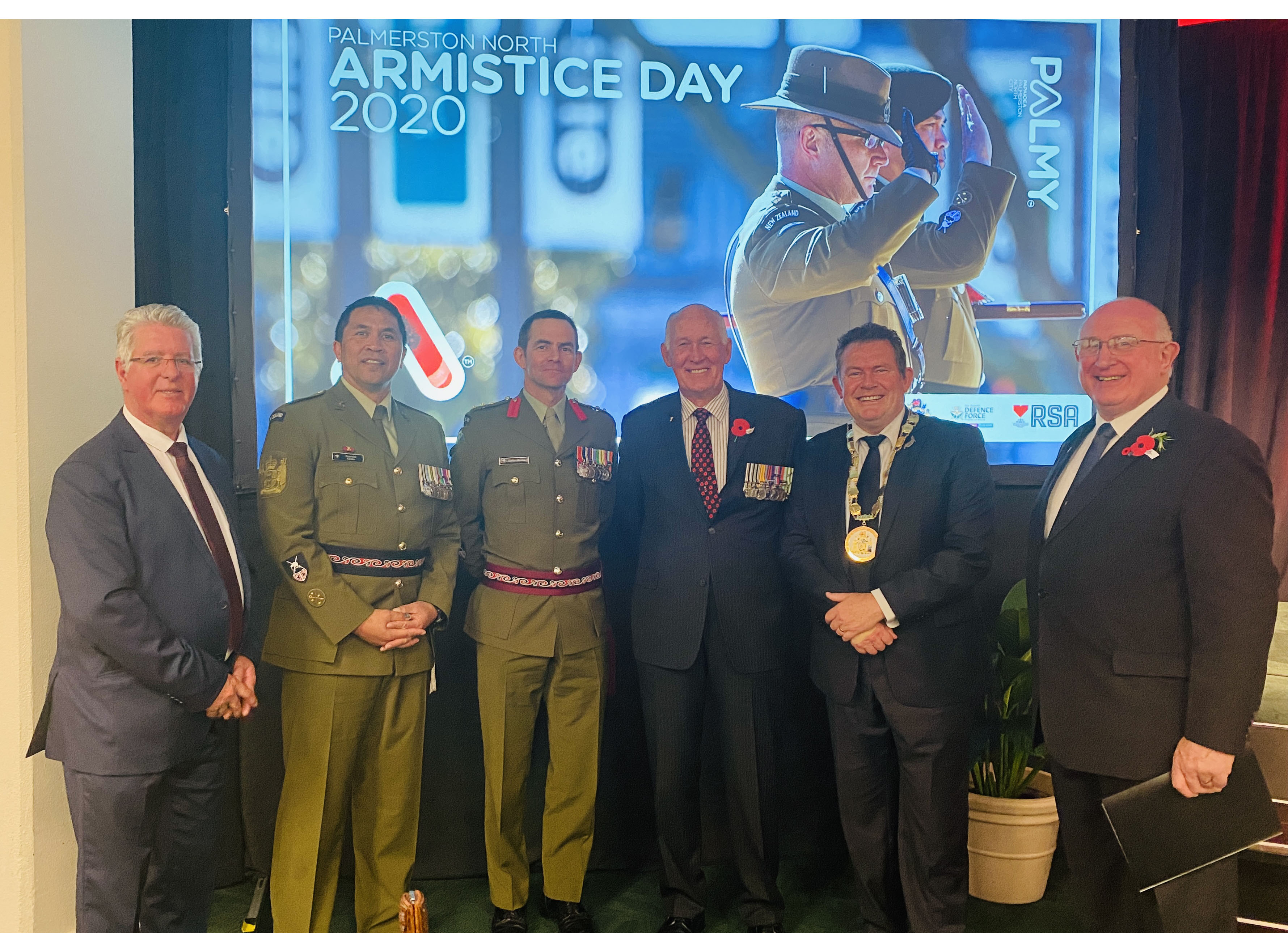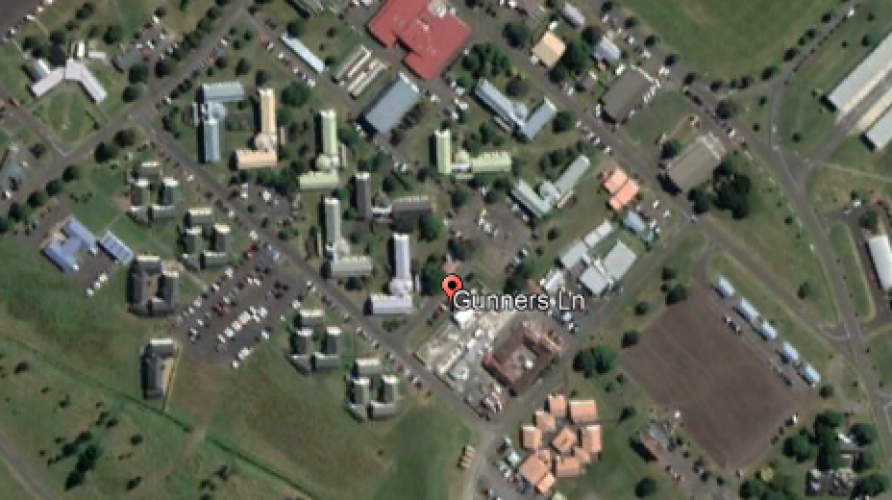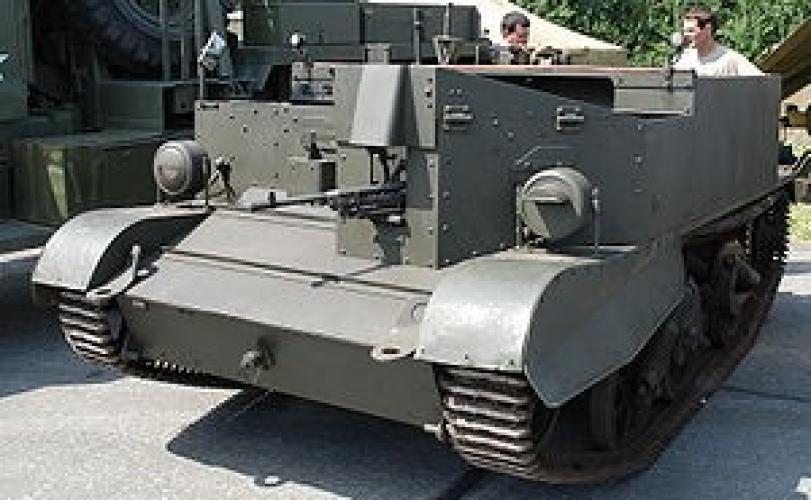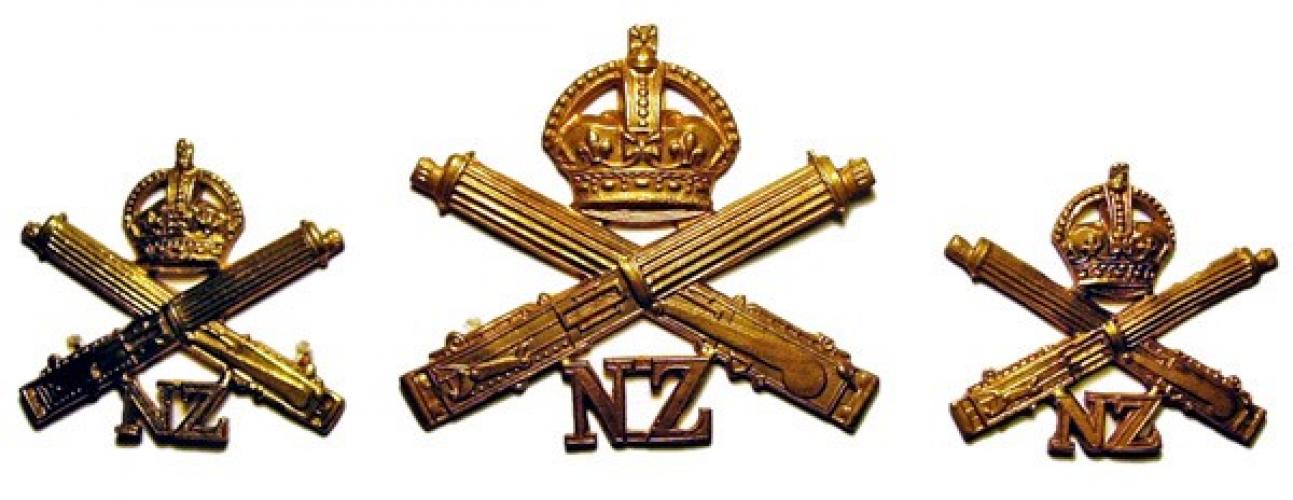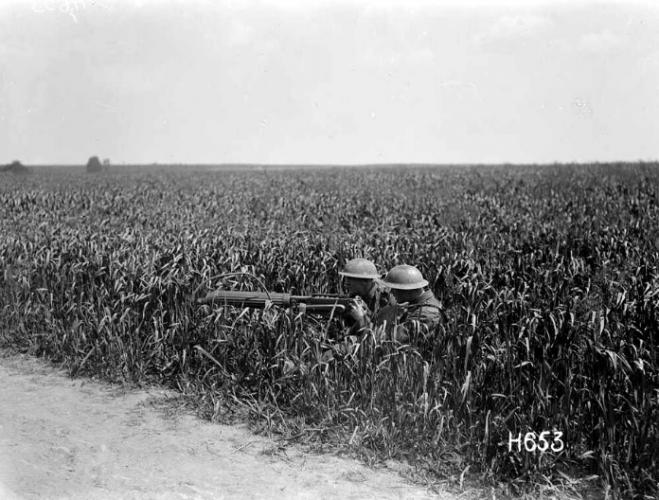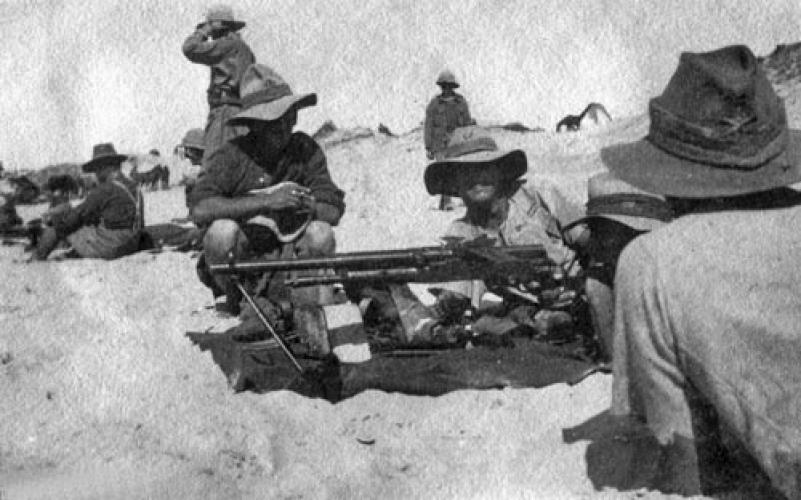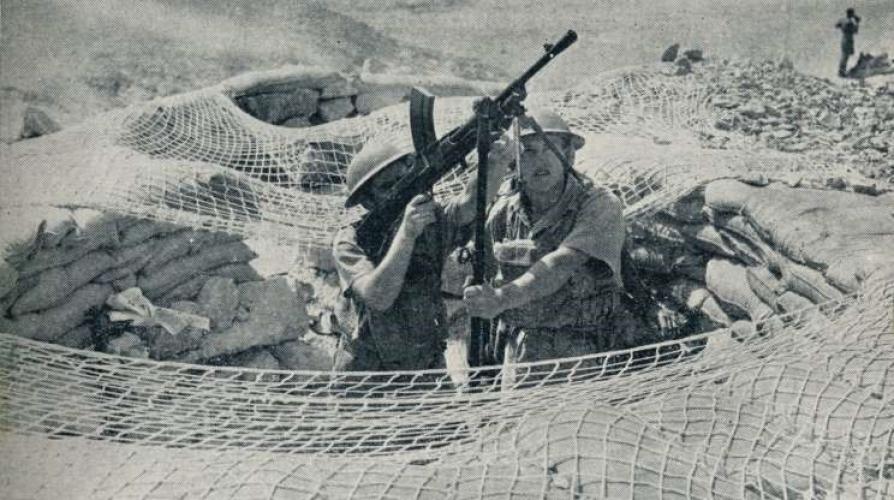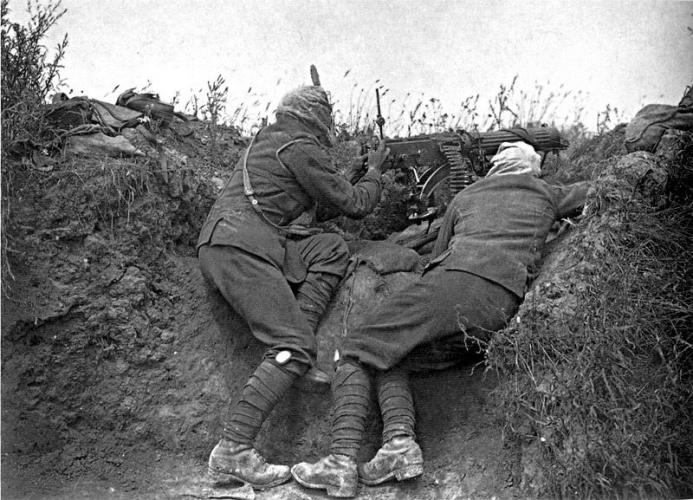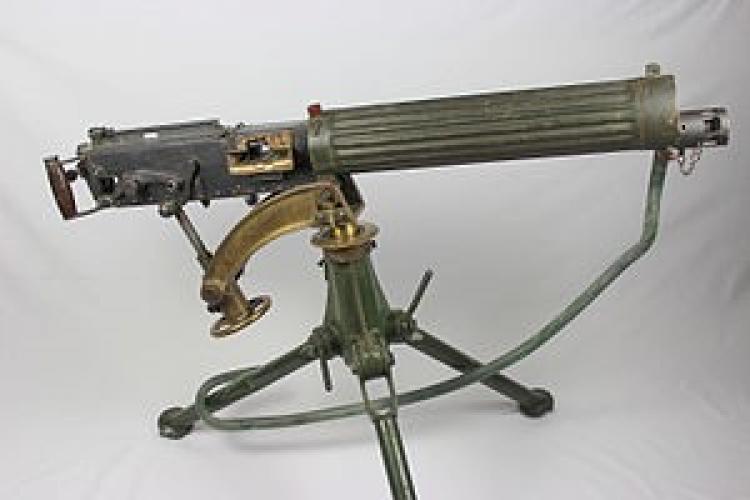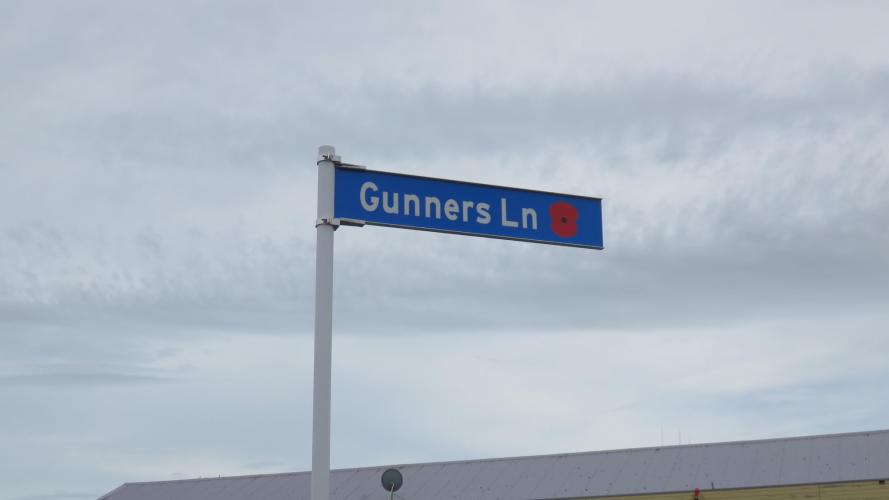258 Gunners Lane LMC Palmerston North, aerial view 2018
Reason for the name
This street was named as a tribute to all machine gunners. In WW1 the machine gun was a vitally important weapon of trench warfare and in both World Wars NZ raised separate specialist machine gun units. Most streets within NZDF Camps and Bases are named in honour of prominent people, battles, campaigns, ships, aircraft and places creating a rich history of our military service.
The machine gun, which so came to dominate and even to personify the battlefields of World War One, was a fairly primitive device when general war began in August 1914. Machine guns of all armies were largely of the heavy variety and decidedly ill-suited to portability for use by rapidly advancing infantry troops. Each weighed somewhere in the 30kg-60kg range - often without their mountings, carriages and supplies.
Machine guns inflicted appalling casualties on both war fronts in World War One. Men who went over-the-top in trenches stood little chance when the enemy opened up with their machine guns. Machine guns were one of the main killers in the war and accounted for many thousands of deaths.
The 27th Machine-Gun Battalion was a unit of the 2nd New Zealand Division during the Second World War. It served in the Greek Campaign, Western Desert Campaign, Tunisian Campaign, Italian Campaign and after the war took part in the Occupation of Japan. It was one of two New Zealand formations that served overseas longer than any other unit in the New Zealand Expeditionary Force. The battalion was also one of the New Zealand units that supplied men for the Long Range Desert Group.
Author: The Poppy Places Trust
Machine guns were important weapons during the First World War, capable of rapidly discharging large numbers of rounds at advancing enemy forces. In 1914 and 1915, each infantry battalion and mounted rifles regiment included a two-gun ‘Machine Gun Section’. The January 1916 reorganisation created a stand-alone New Zealand Machine Gun Corps, a well-equipped body which had a company attached to each infantry brigade and the mounted rifles brigade. Henceforth ‘machine gunners’ have a distinct and separate identity in the records.
A section of the Machine Gun Corps moved to France in April 1916, with a company attached to each of the three (later four) New Zealand infantry brigades. The three Western Front companies were formed into a New Zealand Machine-Gun Battalion in June 1918. New Zealand machine-gun squadrons were also attached to the New Zealand Mounted Rifles Brigade and the Australian Light Horse Brigade in Sinai and Palestine.
The Vickers machine gun or Vickers gun is a name primarily used to refer to the water-cooled .303 British (7.7 mm) machine gun produced by Vickers Limited, originally for the British Army. The machine gun typically required a six to eight-man team to operate: one fired, one fed the ammunition, the rest helped to carry the weapon, its ammunition, and spare parts.[10] It was in service from before the First World War until the 1960s, with air-cooled versions of it on many Allied World War I fighter aircraft.
The weapon had a reputation for great solidity and reliability. Ian V. Hogg, in Weapons & War Machines, describes an action that took place in August 1916, during which the British 100th Company of the Machine Gun Corps fired their ten Vickers guns continuously for twelve hours. Using 100 barrels, they fired a million rounds without a failure. "It was this absolute fool proof reliability which endeared the Vickers to every British soldier who ever fired one. The Vickers machine gun was based on the successful Maxim gun of the late 19th century. After purchasing the Maxim company outright in 1896, Vickers took the design of the Maxim gun and improved it, inverting the mechanism as well as reducing its weight by lightening and simplifying the action and using high strength alloys for certain components. A muzzle booster was also added.
The British Army formally adopted the Vickers gun as its standard machine gun under the name Gun, Machine, Mark I, Vickers, .303-inch on 26 November 1912. There were still great shortages when the First World War began, and the British Expeditionary Force was still equipped with Maxims when sent to France in 1914. Vickers was, in fact, threatened with prosecution for war profiteering, due to the exorbitant price it was demanding for each gun.[citation needed] As a result, the price was slashed. As the war progressed, and numbers increased, it became the British Army's primary machine gun, and served on all fronts during the conflict. When the Lewis Gun was adopted as a light machine gun and issued to infantry units, the Vickers guns were redefined as heavy machine guns, withdrawn from infantry units, and grouped in the hands of the new Machine Gun Corps (when heavier 0.5 in/12.7 mm calibre machine guns appeared, the tripod-mounted, rifle-calibre machine guns like the Vickers became medium machine guns). After the First World War, the Machine Gun Corps (MGC) was disbanded and the Vickers returned to infantry units. Before the Second World War, there were plans to replace the Vickers gun; one of the contenders was the 7.92×57mm Mauser Besa machine gun (a Czech design), which eventually became the British Army's standard tank-mounted machine gun. However, the Vickers remained in service with the British Army until 30 March 1968. Its last operational use was in the Radfan during the Aden Emergency. Its successor in UK service is the L7 GPMG.
The 27th Machine-Gun Battalion was raised at Burnham, in New Zealand, on 3 October 1939. With an authorised strength of around 700 personnel and equipped with Vickers machine guns, the battalion consisted of four machine gun companies, designated No. 1 to No. 4, underneath a headquarters company which fulfilled various specialist functions including administration, signals, transport, and anti-aircraft defence. Under the command of Lieutenant Colonel Lindsay Merritt Inglis, the battalion undertook training in New Zealand before being shipped to Egypt in January 1941.
Further training was undertaken at Maadi Camp, after which the 27th was one of the first units of the 2nd New Zealand Division to go into action in the Greek Campaign in April 1941. It took part in all the battles during the 300-mile (480 km) withdrawal to the Peloponnese, including the rear guard actions in the Battle of Vevi and the Battle of Mount Olympus. The battalion, together with the rest of the division, was withdrawn to Crete and took part in the battle of Crete during the German invasion, fighting at Maleme and Galatas.
After Crete, the battalion served in the Western Desert Campaign, in Operation Crusader in 1941 and the Second Battle of El Alamein, and the pursuit of the Axis forces to Tunisia where it took part in the Tunisian Campaign. Notable was the flanking manoeuvre around the Mareth Line. The battalion was also one of the New Zealand units that supplied men for the Long Range Desert Group.
The battalion was next in action during the Italian Campaign during which its Vickers machine guns fired nearly nine million rounds of ammunition. It was one of the first New Zealand units to cross the Sangro River and early in 1945, was converted to an Infantry battalion and fought in the crossing of the Sillaro River and at the Gaiana Canal, ending the war with the capture of Trieste. The battalion's casualties during the war amounted to 182 killed, 508 wounded and 257 captured. Members of the battalion received the following decorations: three Distinguished Service Orders, eight Military Crosses and one Bar, and 26 Military Medals. One officer was also appointed to the Order of the British Empire.
In the post war period, the battalion was then transferred to the Far East, where it was converted to an infantry unit and served with the New Zealand occupation forces in Japan. On 7 August 1947, the 27th Battalion changed its name to 3rd Battalion, New Zealand Regiment. It was disbanded in 1948 following its return to New Zealand.
Another widely used machine gun was the Bren gun. Usually called simply the Bren, they are a series of light machine guns (LMG) made by Britain in the 1930s and used in various roles until 1992. While best known for its role as the British and Commonwealth forces' primary infantry LMG in World War II, it was also used in the Korean War and saw service throughout the latter half of the 20th century, including the 1982 Falklands War. Although fitted with a bipod, it could also be mounted on a tripod or vehicle-mounted.


